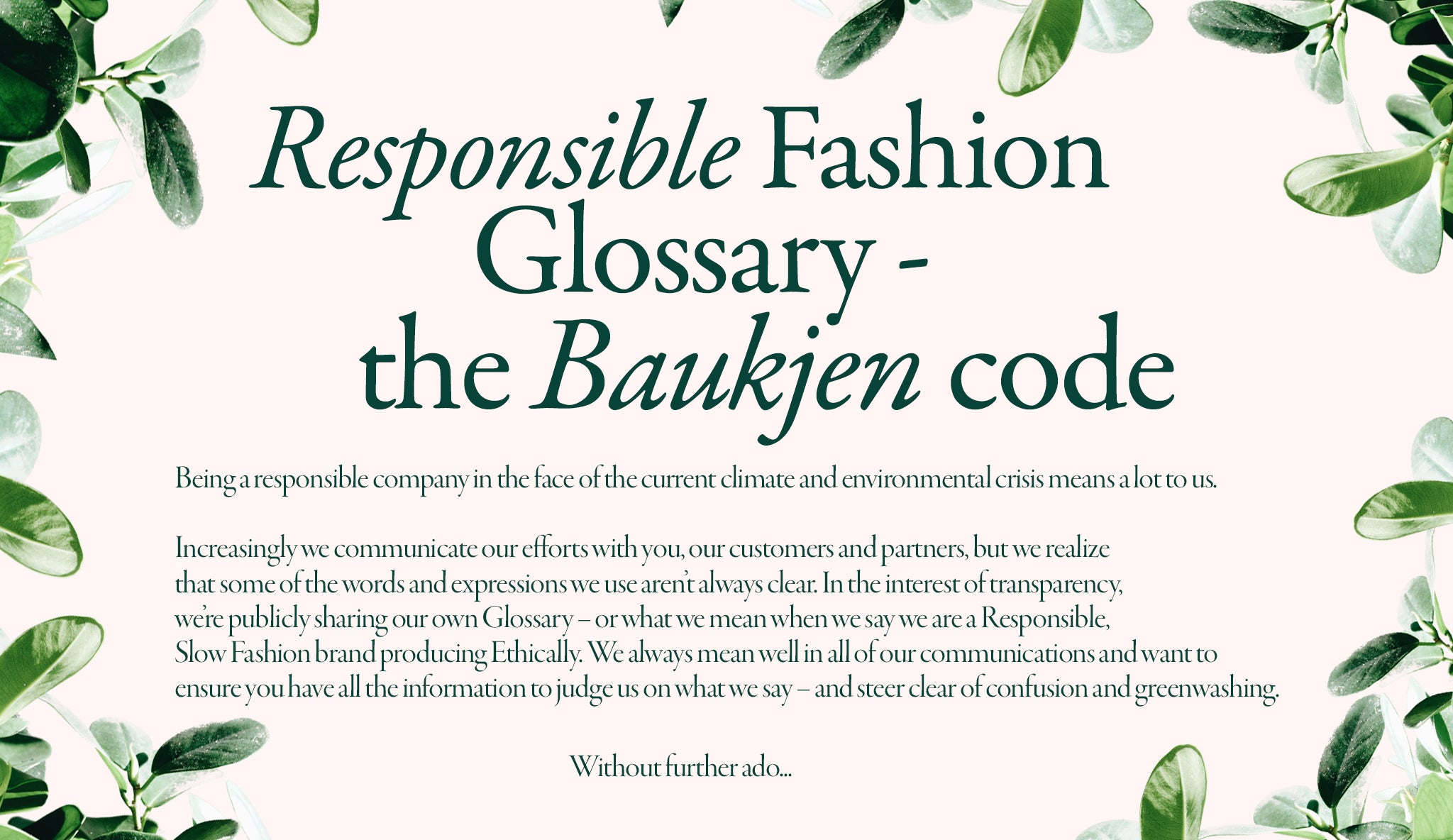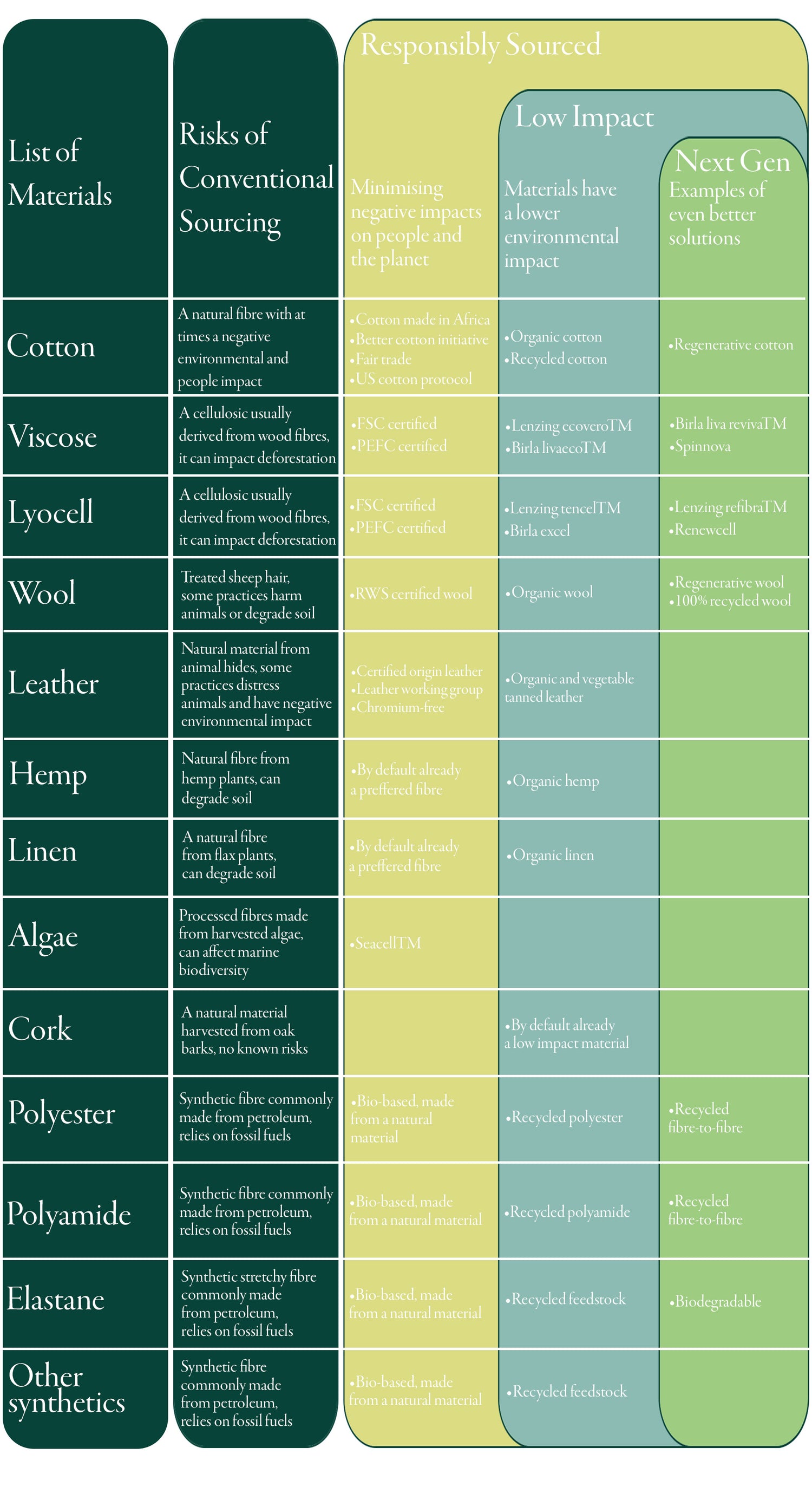
What we mean when we say … at Baukjen
Carbon Negative
Being Carbon Negative means we are responsible for capturing more carbon than we emit. This has been achieved by measuring our greenhouse gas emissions, reducing them as much as possible (something we continue to work on) and offsetting the remaining by supporting verified carbon capture projects.
Ethically Made
We always assess our direct suppliers for their labour practices, and increasingly we’re also assessing our indirect suppliers. This means that before initiating work with a new company we look into how they treat their workers, their employment policies and their third-party audits. We also try to always visit new factories for an
in-person assessment of the factory conditions, though we haven’t always been able to do so in the last 2 years due to the pandemic.
Additionally, we have a strict Code of Conduct that our suppliers must sign and adhere to.
Responsibly Sourced
We understand something to be Responsible when it is sourced in a way that minimizes the negative impacts usually associated with the conventional option for that same material or fibre. A responsibly sourced material or fibre isn’t inherently good, but it is a little better for people and planet.
According to Textile Exchange, up to 80% of a garment’s footprint is determined at the design stage, so careful sourcing of materials and fibres is key to achieving a more responsible fashion industry.
Biodegradable
Sometimes we mention that a material is biodegradable, which means that if left exposed to the elements (in particular if put in moist soil) the material will degrade and fully breakdown. This is true for all natural fibres (provided they’re not mixed with a synthetic fibre, like elastane) and some man-made cellulosic fibres which have a third-party biodegradability certificate (in particular, LENZING ECOVERO™ and TENCEL™).
Natural Fibres
Natural Fibres are just what the name says: they are grown by Nature and not processed in any way that would alter their integrity or chemical structure. They can be vegetable (such as cotton, linen and hemp) or animal (such as wool, silk and alpaca). Natural fibres have different properties, but all of them are biodegradable and generally considered to be healthier. The fact that they are naturally formed doesn’t mean they have a lower environmental footprint than other materials or that they don’t have any harmful chemicals (which can be added as pesticides or as part of the dyeing process).
Slow Fashion
Slow Fashion refers to quality and considered clothing that is made to last, both due to its quality and having a timeless aesthetic that won’t go out of fashion. As an expression it’s often used in contrast to Fast Fashion.
Low Impact
Low Impact fibres and materials are those which have a significantly smaller environmental footprint than their conventional counterparts. This difference can come from lower emissions, lower use of water, using less chemicals or less harsh chemicals, or a combination of these and other factors. We have created a chart to internally define which fibres and materials qualify as smaller environmental impact, making it easier for our teams and suppliers to have a clear idea of what they are looking for.
Upcycled
Some of our materials are upcycled, meaning that they’ve been sourced as either going to waste or deadstock. These materials are usually sourced from warehouses, sometimes with the assistance of our manufacturers. For a material to be Upcycled its initial purchase by a brand or wholesaler must have happened at least 2 years prior to us finding it.

